 |
 |
 |
| |
LONG-TERM ASSESSMENT OF RECURRENCE OF HEPATOCELLULAR
CARCINOMA IN PATIENTS WITH CHRONIC HEPATITIS C AFTER VIRAL CURE BY DAAs
|
| |
| |
AASLD 2021 Nov 12-15 Elichi Ogawa Kyushu University Hospital
Background: Early hepatocellular carcinoma (HCC) recurrence is common, even after achieving hepatitis C virus (HCV) cure. It is crucial to distinguish differences in the relation of DAAs to early and late recurrence when assessing the hepatic benefits of potential DAA-induced viral cures. The aim of this study was to assess the long-term trends and predictors of recurrence after HCV cure by direct-acting antivirals (DAAs).
Methods: This retrospective, multicenter cohort study enrolled 365 consecutive patients with chronic hepatitis C who required HCC treatment following sustained viral response (SVR) by DAA administration. Patients with HCC recurrence before SVR were excluded. Late HCC recurrence and its predictors beyond the post treatment early phase (24 weeks post SVR) were evaluated.
Results: The data of 326 patients were available for the final analysis. The median follow-up duration from SVR determination was 2.7 years. Median age was 74, and 220 (67.5%) were 70 or over. The median follow-up duration from SVR determination was 2.7 years (range 0-5.4 years). After excluding patients with early HCC recurrence, the corresponding 3- and 5-year cumulative HCC recurrence rates in the previous curative HCC treatment group were 33.6% and 45.4%, respectively. In contrast, the rates in the previous palliative HCC treatment group were significantly higher, at 56.2% and 65.7%, respectively (log-rank test: P<0.001) (Figure A). Cox regression multivariable analysis revealed that cirrhosis (hazard ratio [HR] 1.90, P=0.017), the number of HCC nodules (≥2) (HR 1.55, P=0.024), and previous palliative HCC treatment (HR 1.73, P=0.010) were independent predictors of late recurrence, in addition to the predictors of early recurrence; AFP>7 ng/mL at 12 weeks after DAA administration, time from HCC complete response (CR) to DAA initiation (<1 year), and the number of HCC treatments necessary to achieve CR (≥2). In the group that excluded patients with early HCC recurrence, the 3- and 5-year survival rates for those with previous curative treatment (92.2% and 87.2%) were significantly higher than those of patients with previous palliative treatment (83.2% and 70.6%) (log-rank test: P=0.009) (Figure B).
Conclusion: The evaluation of fibrosis and characteristics of the previous HCC would allow for better HCC recurrence stratification, which would be helpful for developing long-term surveillance strategies.
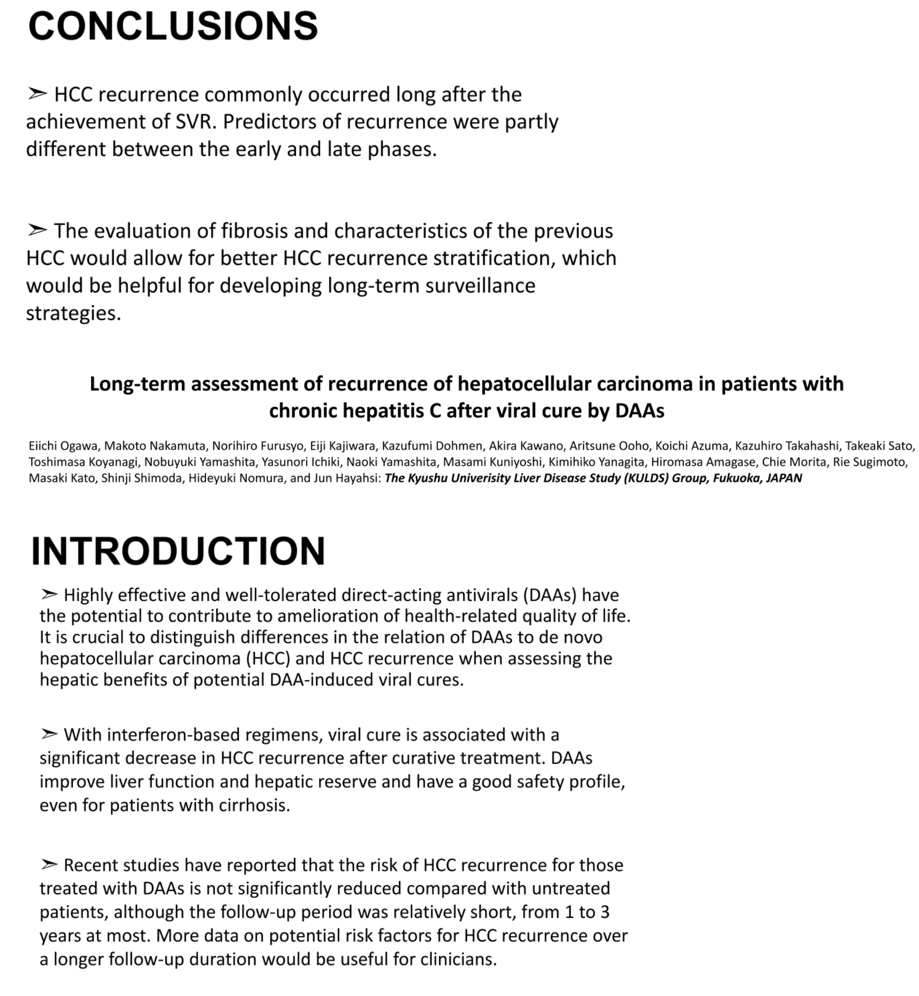

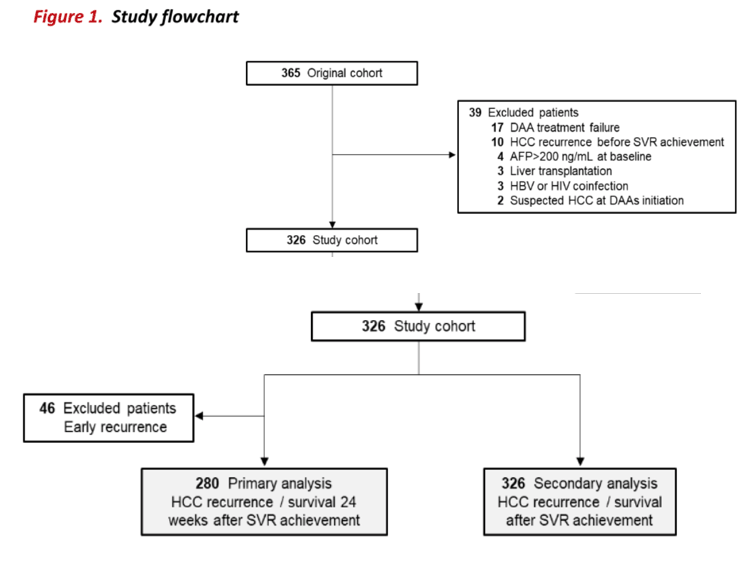
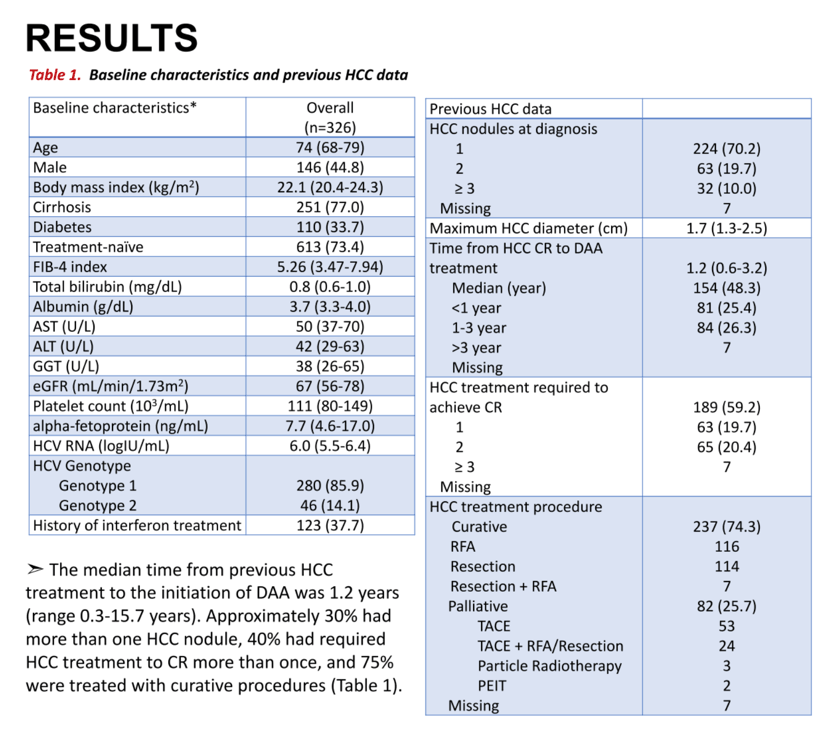
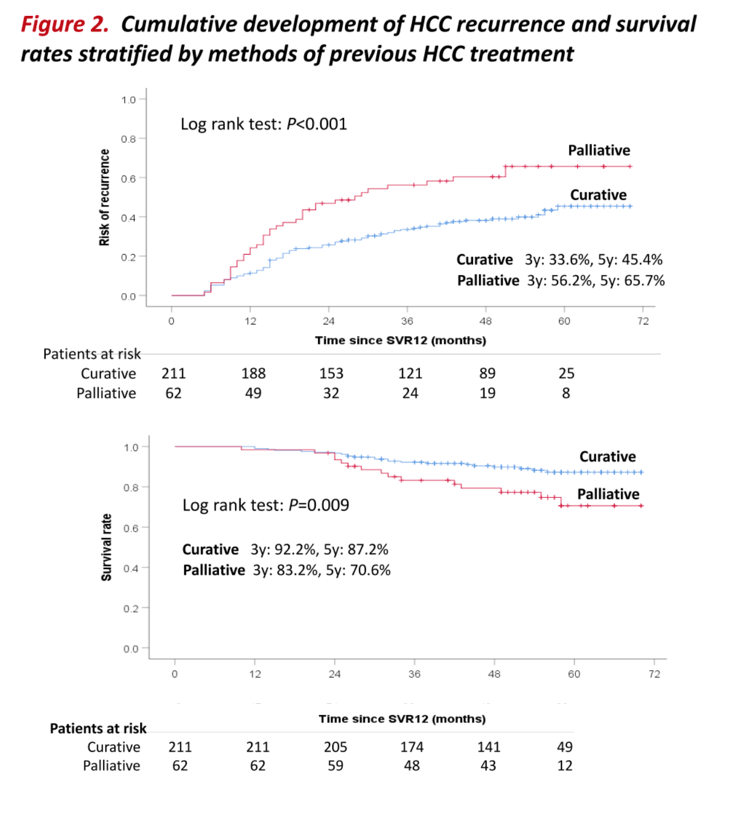
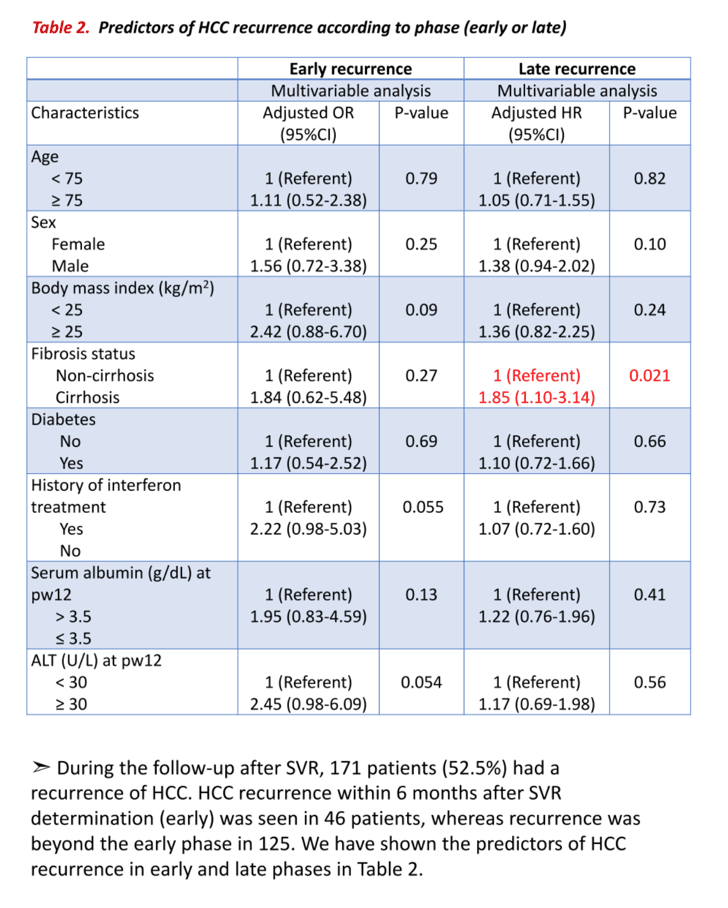
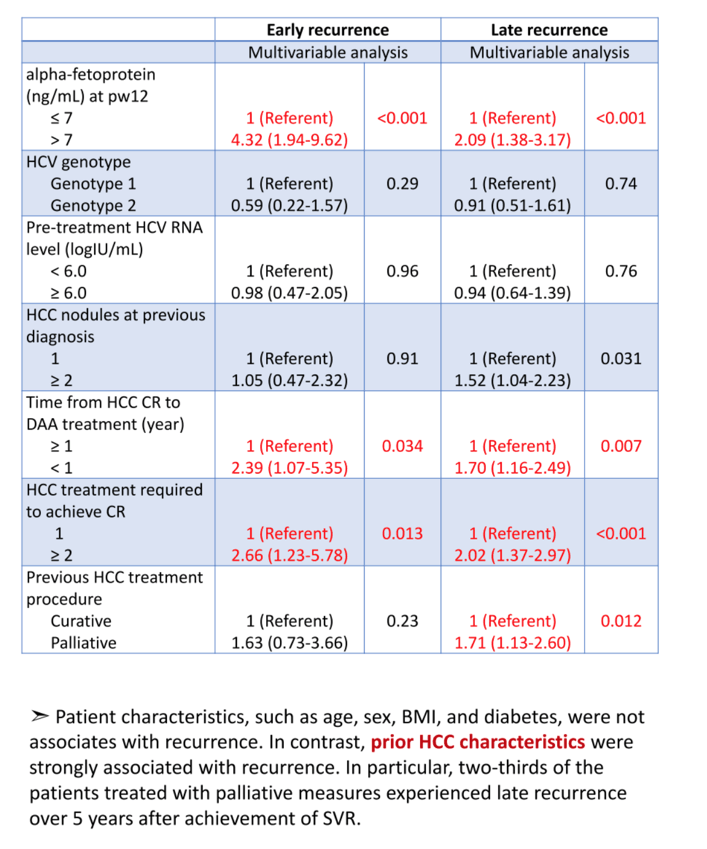
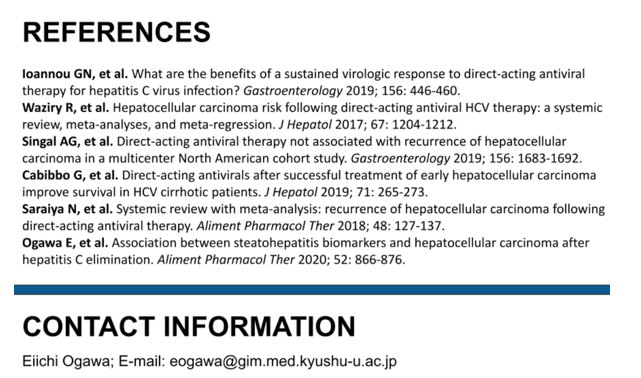
|
| |
|
 |
 |
|
|